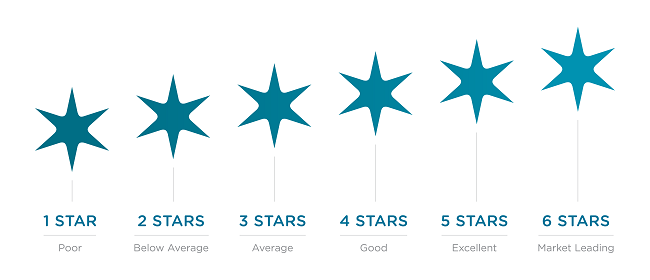The City of Yarra is already responding to a growing demand in the community for zero carbon, healthy and climate resilient homes and workplaces. But how do they verify this? One pathway is through a NABERS Commitment Agreement.

Australia’s 537 local councils are the level of government closest to the community, which means they play a central role supporting households and businesses to reduce their emissions and adapt to a changing climate. Local governments are also collectively responsible for more than $380 billion worth of infrastructure and land.
Around 85% of the City of Yarra’s carbon emissions come from the electricity and gas consumed in residential and commercial buildings. Yarra, which is home to around 100,000 people in inner Melbourne, is currently working to introduce zero carbon standards for new commercial and multi-residential developments.
Yarra’s sustainability story stretches back almost a decade, to 2012, when it became the first Victorian council to achieve carbon neutral certification with ClimateActive. It was also one of the first councils in the world to declare a climate emergency.
Sustainability criteria were embedded into Yarra’s planning permits in 2015. This requires development applicants to demonstrate their building will be “best practice” across a range of metrics, including energy and emissions, but also daylight, ventilation, storm water management and more. But how does council verify that a building will achieve “best practice”?
View the case study here: Yarra City Council, VIC
By embedding a commitment to zero carbon into our planning permits, we‘re driving positive energy performance.
“At Yarra, we’re committed to best practice when it comes to incorporating environmentally sustainable design in all our planning applications. NABERS Energy is one of the best mechanisms we have to monitor and report on the environmental performance of our buildings,” says Euan Williamson, Environmental Sustainability Development Adviser at Yarra City Council.

More than a piece of paper
The Built Environment Sustainability Scorecard, or BESS, supports planning applicants to demonstrate how a proposed development in Yarra will meet best practice sustainable design at the planning permit stage.
Australia’s National Construction Code outlines minimum standards for health, safety, amenity and energy efficiency. The Code’s energy efficiency standards only apply to the thermal performance of a building’s envelope, layout and materials; it does not consider other influences of a building’s energy efficiency, like lighting, heating and cooling.
BESS, on the other hand, benchmarks a building’s performance across a range of environmental categories. Meeting these benchmarks confirms that a building achieves – and in many cases exceeds – best practice.
“When we see a NABERS Commitment Agreement attached to a planning permit application, we know that the building will undergo an additional rigorous assessment.”
Yarra’s Statutory Planning team scrutinises each application carefully – but can usually see quite quickly whether a building will easily meet its energy efficiency targets.
“If a design features big glass curtain walls, for example, the team will ask for more detail to verify that the outcomes will be consistent with the claims and will recommend a final NABERS certification,” Euan says.
Transparency and accountability
BESS gives the City of Yarra access to high quality data. “We now have an average 7-star NatHERS rating for new apartments, for instance, which we can demonstrate to the Australian Building Codes Board as it embarks on regulatory reform,” Euan notes.
The City of Yarra is collaborating with 30 other councils through the Council Alliance for a Sustainable Built Environment (CASBE) to support the push towards net zero.
It’s an ambitious project, but as Euan says: “By working together, Victorian councils can deliver planning policy that is consistent, clear and sustainable. NABERS can play a role in current and future standards as a legitimate way for applicants to demonstrate they meet council requirements around energy efficiency and accountability. This supports industry and governments’ work towards zero carbon buildings.”
View the case study here: Yarra City Council, VIC
What is a NABERS commitment agreement?
A NABERS Commitment Agreement is a contract signed by a developer or building owner at the design stage. The agreement outlines a commitment to design, build and commission a building to achieve a specific NABERS Energy rating. Commitment Agreements can be signed for new builds or refurbishments and across a range of building types.
The NABERS Commitment Agreement process requires a transparent third-party design review that can uncover opportunities and obstacles to high performance. Building owners routinely report lower operational energy costs and increases to capital value following their verified NABERS rating.

